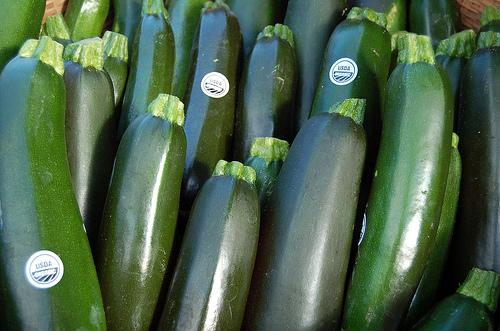“Organic foods” refer to items grown without the use of chemical fertilizers or pesticides. Organic foods can be single pieces of produce like apples, multi-ingredient products like crackers, or refer to animal products where the animal was fed organically-grown grains and not given antibiotics. Organic foods are eco-friendly, though pricey. Unless you purchase organic foods from a local farmer, these non-toxic items will cost considerably more than conventionally-grown foods. It’s up to you to determine if the benefits outweigh the costs. Either way, organic foods are part of a booming industry.
Benefits
Organic foods are beneficial for the environment. Organic farming encourages soil and water preservation and employs natural methods of weed and pest control, such as crop rotations, mulching and spreading manure and the introduction of beneficial insects and birds. Organic foods may be more nutritious than conventional food. Research suggests that plants grown without chemicals boost their production of phytochemicals (vitamins and antioxidants). Because organic produce doesn’t use chemicals, it protects the consumer from ingesting any chemical residues. Even low levels of pesticides are considered toxic, especially to fetuses, children and pregnant women. Because organic meat is free of antibiotics, you won’t have to worry about your food contributing to the growth of antibiotic-resistant bacteria, which results from overuse of the drugs.
Identification
Make sure any organic foods you purchase is certified by the United States Department of Agriculture’s (USDA) National Organic Program (NOP). NOP certification is made clear with a “USDA organic” logo on the front of the package or on the food’s label. The NOP regulates how food is grown, handled and transported.
Types
There are a few different ways to label organic food. When a food is listed as 100 percent organic, it is either a single ingredient food (like a vegetable or fruit) or contains multiple ingredients that have been completely organically grown. If the label just says “organic,” then the product is at least 95 percent organic. “Made with organic ingredients” signifies that the food contains at least 75 percent organic ingredients. An item with less than 70 percent organic ingredients cannot market itself as organic on the front label but can list organic items on the ingredients list.
Considerations
Organic food is pricier than conventional food because organic farming practices are labor-intensive and, due to the strict government protocols, must be followed to display the USDA’s organic label. If organic food is out of your price range, yet you want to protect yourself from potential chemical residue, spend the extra money for organic versions of what’s called the “dirty dozen:” peaches, lettuce, potatoes, strawberries, celery, pears, apples, nectarines, bell peppers, cherries, grapes and spinach. These fruits and vegetables absorb much more chemicals than hardier produce, like broccoli.
Buying Tips
Purchase organic foods that are locally-grown to maximize your positive impact on the environment. Besides being cheaper, locally grown food cuts out long traveling distances, which reduces your carbon footprint.





